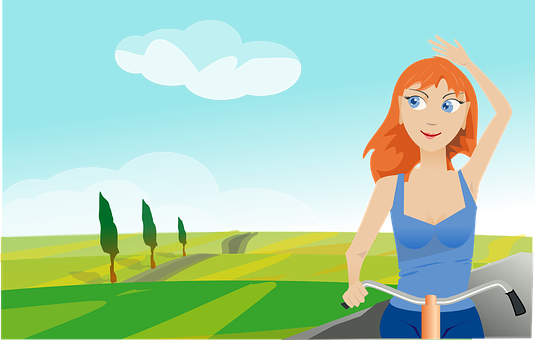A joint describes where two or more bones meet. Some joints are freely movable, such as the shoulder, while others can't move at all, such as the plates of the skull. Movable joints are held in correct alignment by non-elastic fibrous tissue called ligaments. Ligaments have a poor blood supply, which makes them slow to heal when injured. Cycling uses all of the major joints in your lower body.

source
ANKLE
The union between your tibia, fibula and tarsal bones is commonly known as your ankle joint. The ankle flexes downward in a movement called plantarflexion and upward in a movement called dorsiflexion during cycling. The purposeful use of the ankle joint in cycling is called ankling or active pedaling and involves pushing down and forward as well as pulling back and upward as you pedal. This action improves cycling efficiency by ensuring that even pressure is applied to the pedals throughout each crank revolution.
KNEE
Composed of the femur or thigh bone, the tibia or shin bone, and the patella, the knee joint is a common area of injury for cyclists. The average cyclist pedals at 70 to 90 revolutions per minute, so a one hour ride results in 4,200 to 5,400 knee joint movements. The repetitive action of cycling can increase joint wear and tear, which may lead to the early onset of osteoarthritis.
HIP
The head of the femur articulates with the socket of the ilium, part of your pelvis, to form the hip joint. The hip joint is very mobile and strong and is controlled by the largest muscle in the human body, the gluteus maximus or butt muscle. Like the knee, the hip moves thousands of times per hour of cycling and is prone to wear-and-tear related injuries.
SPINE
The spine is composed of 33 individual vertebrae that are separated by tough, fibrous material called intervertebral discs. In cycling, the spine is mostly in a forwardly flexed position. Long hours of cycling can have a negative effect on posture, and many cyclists have a rounded upper back as a result of their hours in the saddle. Mountain bikes promote a much more upright torso position than road bikes. This means that, if you suffer from back pain, a mountain bike may be more comfortable.
Funny how we target a specific cadence / rpm, but I have never really considered what the total revolution count would be. 5000 rotations is pretty huge.